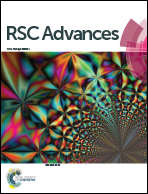Carbon microspheres air electrode for rechargeable Li–O2 batteries
Abstract
Carbon microspheres (CMs) were synthesized by a reflux-calcination method and showed a large BET surface area of 626.919 m2 g−1, a typical micropore structure and good electrochemical properties. The CMs which were employed as an air cathode without the addition of any metal particles, not only provided reaction sites but also acted as a cathode carbon support in the non-aqueous system of Li–O2 batteries. An initial discharge capacity of 12 081.0 mA h g−1 could be obtained at 200 mA g−1. Little capacity loss was shown after 20 full discharge–charge cycles under a current density of 300 mA g−1. 60 cycles of continuous discharge and charge were achieved with no capacity loss with a cut-off capacity of 1000 mA h g−1, at 200 mA g−1. The reversible formation is clearly revealed by the CV curves.


 Please wait while we load your content...
Please wait while we load your content...